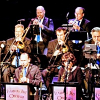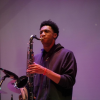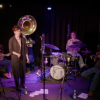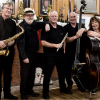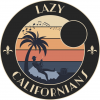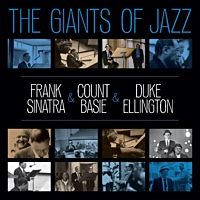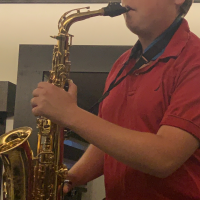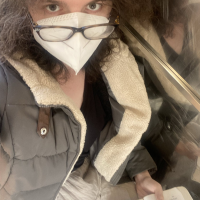Home » Jazz Musicians » Count Basie
Count Basie

Bill Basie studied music with his mother as a child and played piano in early childhood. He picked up the basics of early ragtime from some of the great Harlem pianists and studied organ informally with Fats Waller. He made his professional debut as an accompanist for vaudeville acts and replaced Waller in an act called Katie Crippen and her Kids. He also worked with June Clark and Sonny Greer who was later to become Duke Ellington’s drummer.
It was while traveling with the Gonzel White vaudeville show that Basie became stranded in Kansas City when the outfit suddenly broke up. He played at a silent movie house for a while and then became a member of the Walter Page Blue Devils in 1928 and ’29. Included in the ranks of the Blue Devils was a blues shouter who was later to play a key role as early male vocalist with Basie’s own big band, Jimmy Rushing. It was in fact the rotund Rushing who happened to hear Basie playing in Kansas City and invited him to attend a Blue Devil's performance. Basie soon joined the band after sitting in with them that night.
After Page's Blue Devils broke up Count Basie and some of the other band members integrated into the Bennie Moten band. He remained with Moten until his death in 1935. After Moten’s death the band continued under the leadership of Bennie’s brother Buster, but Basie started a group of his own and soon found a steady gig at the Reno Club in Kansas City employing some of the best personnel from the Moten band himself.
The band gradually built up in quantity and quality of personnel and was broadcast live regularly from the club by a small Kansas City radio station. It was during one of these broadcasts that the group was heard by John Hammond, a wealthy jazz aficionado, who had himself worked as an announcer, disc jockey and producer of a live jazz show on radio. Hammond decided that the band must go to New York. Through his efforts and support (at times even financially) the band enlarged its membership further and went to New York in 1936. Hammond installed Willard Alexander as the band’s manager and in January of 1937 the Count Basie band made its first recording with the Decca record label.
By the following year the Basie big band had become internationally famous, anchored by the leader’s simple and sparse piano style and the rhythm section of Freddie Greene guitar, Walter Page bass, and Jo Jones drums. The great soloists of this band included Jimmy Rushing as vocalist, Lester Young and Herschel Evans tenor saxes, Earl Warren on alto, Buck Clayton and Harry “Sweets” Edison on trumpets, and Benny Morton and Dickie Wells on trombones, among others. Also contributing to the bands success were the arrangements by Eddie Durham and others in the band and the “head” arrangements spontaneously developed by the group.
Read moreTags
Lost and Found, Part 2: Historic Jazz Recordings from the Swing Era

by Larry Slater
Lost recordings of the early decades of jazz are particularly rare and greatly valued, as the great soloists of the swing era were constrained by the length of the 78rpm shellac disc. Jazz fans and scholars were thrilled to learn about the Savory Collection, which was released in 2018. Bill Savory was a music lover who single handedly captured hundreds of hours of top-shelf music off the air in the six years preceding America's entry into World War ...
Continue ReadingCount Basie, Duke Ellington, Louis Armstrong & John Coltrane

by Joe Dimino
Welcome to a special themed hour of jazz as we journey deep into the pages of Larry Tye's acclaimed book Jazz Men. This compelling work brings to life the triumphs, struggles, and sheer brilliance of Duke Ellington, Count Basie, and Louis Armstrong--three giants who not only shaped jazz but also helped move America forward during an era when civil rights were still finding their voice. Throughout this hour, we weave in Larry Tye's insights with a handpicked soundtrack that tells ...
Continue ReadingSwing Bands

by Monk Rowe
For pure swing, the bands led by Count Basie will never be equaled. Harry “Sweets" Edison, Ed Shaughnessy, Snooky Young, Gerald Wilson and Joe Williams offer personal anecdotes and insights that help us understand the man who personified big band swing. ...
Continue ReadingFletcher Henderson, Count Basie, Charlie Parker & Ella Fitzgerald

by Joe Dimino
We dedicate the entirety of the 843rd Episode of Neon Jazz to the history and culturally vital institution, Harlem's Apollo Theater. After finding an illustrated book on the history of this landmark institution in the history of African American culture, it was essential to cover the jazz side of things from the book's perspective. We begin with the legendary Duke Ellington and end with Tiny Bradshaw. In between, we get into classics from the likes of Ella Fitzgerald, Earl Hines, ...
Continue ReadingThe Best of Basie

by Bob Bernotas
In 1935, pianist William “Count" Basie (born August 21, 1904), a fixture on the Kansas City jazz scene since the late 1920s, organized his own rocking, riffing, blues-based big band. The following year this freewheeling unit came east and took New York by storm. For the next decade and a half, Basie's stellar cast--which included such original jazz stylists as tenor saxophonists Lester Young and Herschel Evans, trumpeters Buck Clayton and Harry “Sweets" Edison, trombonist Dicky Wells, drummer Jo Jones, ...
Continue ReadingSubtle Is as Subtle Does

by Patrick Burnette
Ya want big bands? We got big bands. Sometimes we got one in each speaker. In this exploration of the more extroverted side of jazz, the boys check out works by a blazing trumpet player (and world-class womanizer), a so-so clarinetist with a heart of gold, two piano-playing band leaders who both worship Duke Ellington, and two (but it sounds like thirty) major-league skin-pounders. Much musing on the glory days of fifteen musicians criss-crossing the nation via bus routes, and ...
Continue ReadingDocumenting Jazz 2019

by Ian Patterson
Documenting Jazz Conservatory of Music and Drama TU Dublin Dublin, Ireland January 17-19, 2019 Jazz music, which has pretty much always meant different things to different people, has been comprehensively documented since its arrival in the first decades of the twentieth century. The most obvious form of documentation, that's to say studio recording, is almost as old as the music itself, whilst live recordings, both official releases and bootlegs, radio and ...
Continue ReadingBackgrounder: Count Basie's Sinatra Tribute (1963)
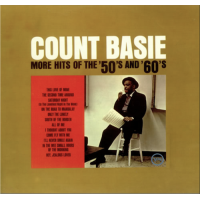
Source:
JazzWax by Marc Myers
In 1963, Count Basie was persuaded by producer Norman Granz to record a tribute album to singer Frank Sinatra. Though Creed Taylor was Verve's executive producer by then, Granz held onto several of his artists, including Basie and Ella Fitzgerald, after the label was sold to MGM. By then, Sinatra and Basie had recorded and released the first of three albums together for Sinatra's Reprise label—Sinatra-Basie: An Historic Musical First (1962), arranged by Neal Hefti. Basie had also recorded This ...
read more
The Return of Pablo Records
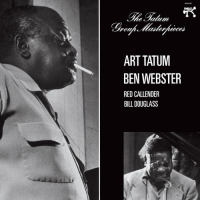
Source:
JazzWax by Marc Myers
In the early 1970s, I worked for a few months at Sam Goody's in Manhattan on Third Ave. and 43rd St. The store manager wanted me in the rock section, but I kept drifting down to the jazz department to talk with Harry Lim. Harry was quiet and looked unassuming to the average record-buyer, but I knew who the retiree was. In the late 1930s and 1940s, the Javanese-American produced recording sessions for Keynote Records. One day, Harry took me ...
read more
Backgrounders: Basie With Quincy and Hefti

Source:
JazzWax by Marc Myers
In 1958, the French Vogue label put out a double LP in Europe entitled Count Basie Plays Quincy Jones & Neal Hefti. Essentially, it was a re-issue of two previous Roulette releases—Basie One More Time: Music From the Pen of Quincy Jones (1960) and Basie Plays Hefti (1958). Both are classics in the Basie canon and remain masterpieces today. Quincy Jones and Neal Hefti, alone with Ernie Wilkins and Frank Foster were among the leading composer-arrangers for Basie's New Testament ...
read more
Jazz Musician of the Day: Count Basie

Source:
Michael Ricci
All About Jazz is celebrating Count Basie's birthday today!
Bill Basie studied music with his mother as a child and played piano in early childhood. He picked up the basics of early ragtime from some of the great Harlem pianists and studied organ informally with Fats Waller. He made his professional debut as an accompanist for vaudeville acts and replaced Waller in an act called Katie Crippen and her Kids. He also worked with June Clark and Sonny Greer who ...
read more
Count Basie: Copenhagen, 1962

Source:
JazzWax by Marc Myers
American jazz fans are often left wondering why Europeans, Scandinavians and the Japanese are so passionate about the music while listeners here don't seem to have much of an appetite for it. One reason is the vast amount of touring that American jazz musicians did in those parts of the world in the 1960s and beyond. For fans overseas, the music was a celebration of optimism and freedom after years of horror and hardship. One artist who toured regularly internationally ...
read more
Documentary: Born to Swing

Source:
JazzWax by Marc Myers
In 1973, the BBC aired a 50-minute documentary from director John Jeremy on the alumni of the Count Basie Band of 1943. And then the documentary went out of print. Fortunately for us, the person behind Remembrance of Things at YouTube found an old VHS tape at the public library and uploaded it as a vital historical document. The documentary includes interviews with Buck Clayton, Buddy Tate, Jo Jones, Dicky Wells and Earle Warren. You'll also hear from Gene Krupa, ...
read more
Jazz Musician of the Day: Count Basie

Source:
Michael Ricci
All About Jazz is celebrating Count Basie's birthday today!
Bill Basie studied music with his mother as a child and played piano in early childhood. He picked up the basics of early ragtime from some of the great Harlem pianists and studied organ informally with Fats Waller. He made his professional debut as an accompanist for vaudeville acts and replaced Waller in an act called Katie Crippen and her Kids. He also worked with June Clark and Sonny Greer who ...
read more
Count Basie in London in 1977

Source:
JazzWax by Marc Myers
There were two TV arts programs called Omnibus. One aired in the U.S. from 1952 to 1961 and was sponsored by the Ford Foundation. The point of the 44 episodes was to raise American taste with educational programming. The show aired on Sunday afternoons at 4 p.m. (ET) on CBS and again on ABC that evening. Hosted by Alistair Cooke, the series won more than 65 awards, including eight Emmys and two Peabodys. In the U.K., Omnibus was a British ...
read more
Jazz Musician of the Day: Count Basie

Source:
Michael Ricci
All About Jazz is celebrating Count Basie's birthday today!
Bill Basie studied music with his mother as a child and played piano in early childhood. He picked up the basics of early ragtime from some of the great Harlem pianists and studied organ informally with Fats Waller. He made his professional debut as an accompanist for vaudeville acts and replaced Waller in an act called Katie Crippen and her Kids. He also worked with June Clark and Sonny Greer who ...
read more
Dance Along With Basie, 1959

Source:
JazzWax by Marc Myers
You won't find one of my favorite Thad Jones albums listed under his name. It's Dance Along With Basie, recorded for Roulette at the tail end of the 1950s. Cut over four sessions during the December holiday season in 1959, the album features mostly mid-tempo, swinging arrangements of standards. They're all strikes and perfect for a twirl around the dance floor. Despite the updated swing of Basie's New Testament band of the 1950s, the band was always first and foremost ...
read more





























